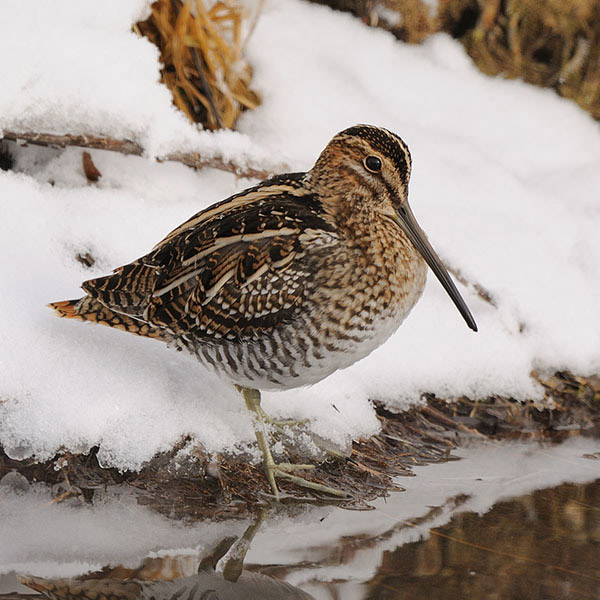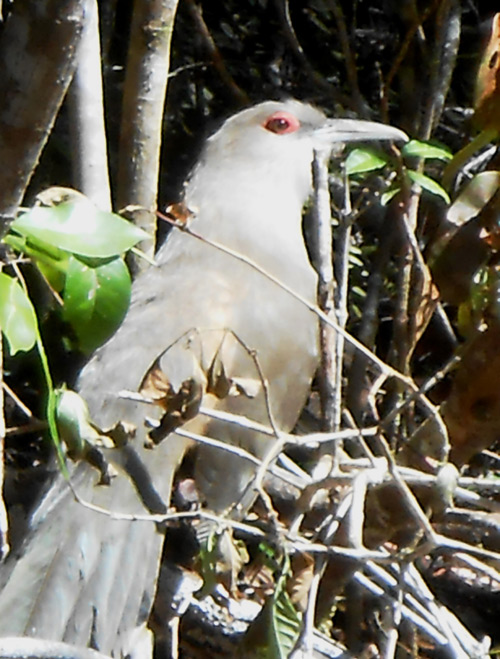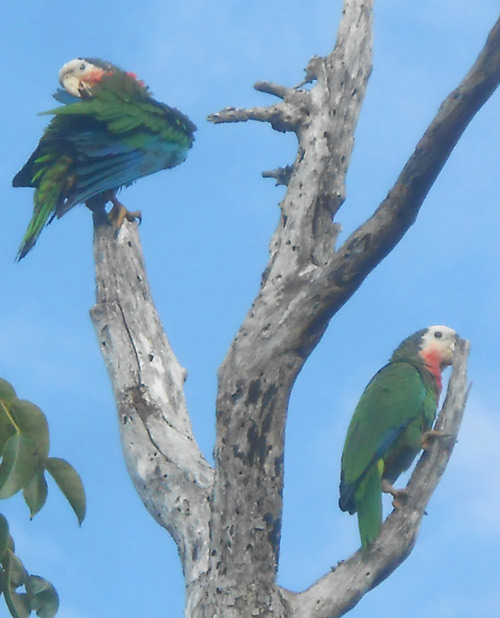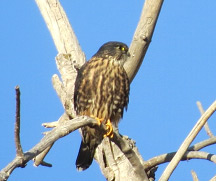Utah County Birders Newsletter
|
 |
Contents
March Meeting
Upcoming Field Trips
Captainís Log
Birding in Bare
Feet
Bird of the Month
Field Trip Report
- Wasatch Co.
Backyard Bird of the Month
February Hotline Highlights
MARCH MEETING:
Thursday, March 13th, 2014 - 7:00 PM
John Crawley will give a presentation on his recent trip to Southeast Asia.
We will be meeting at John Crawley's house. 2544
N 530 E, Provo, Utah - Map -
http://binged.it/1idG3gA
15 March, 2014 (Sat): Juab and San Pete Counties - Time: 7:00 AM - Meet: NE corner of the parking lot of the Payson Walmart (just off the second Payson exit if coming from the north). Leader: Dennis Shirley. We will make a loop through Juab and San Pete Counties hitting areas like Burriston Ponds, Wales Reservoir, Fairview, etc. Should be back in the early afternoon.
29 March, 2014 (Sat):
Antelope Island - Meet at 7:30am at Pioneer
Crossing Park & Ride just west of I-15. Leader: Keeli Marvel. We are going
to go to Antelope Island for some early spring birding and get our Davis County
birds for the
UCB birding challenge.
We are actively recruiting people to lead local half-day field trips, any time,
any place. If you would like to lead a field trip or if you have any ideas for
this yearís field trips, please contact Bryan Shirley at -
bt_shirley@hotmail.com
by Keeli Marvel
 |
|
Wilson's Snipe |
Captainís Log: March Ė Songs and Sounds of Birds
The diversity of sounds birds are able to produce is amazing Ė just as amazing
as the ways they produce them. Birds make sounds for a number of reasons. The
number one reason is to attract a mate and defend a territory, but other reasons
include individual identification, communication of a threat like the presence
of a predator, or other communication such as the location of food, or the
desire to be fed. Bird vocalizations can take several different forms including
songs, calls, call notes, and chip notes. Some species even have regional
dialects (like accents).
Some species have a distinct call or song that rarely varies, while other
species, like the Northern Mockingbird, mimic other birds and build up a
repertoire of various calls. My favorite example of this is the lyrebird that is
found in Australia. If you pull up the YouTube video website and search for
lyrebird there is a video clip narrated by Sir David Attenborough of a lyrebird
mimicking the most remarkable sounds. They can mimic just about everything, and
the one in the video mimics chainsaws, car alarms, and camera shutters. They
build as diverse a repertoire of calls as possible for the same reason Northern
Mockingbirds do Ė to attract a mateó and the one with the most diverse
collection of calls may be the one that gets the girl. Some species in the
parrot and corvid (ravens, crows, etcÖ) families are even able to mimic human
speech.
Some bird species communicate with sounds that are not actually vocalizations.
Woodpeckers use their beaks to drum on trees and a variety of other surfaces in
their environment. Other species produce noise mechanically through the
manipulation of air and feathers. An example of this is the noise Wilsonís Snipe
make. I remember the first time I heard this, I was driving around the end of
Deer Creek and I stopped to scan a marsh and heard this sound I could only
describe as a ďwubba wubba wubbaĒ sort of noise. I found out later itís called
winnowing, and snipe use the noise to attract mates and defend territory. The
sound is made by moving air very quickly over their specially modified outer
tail feathers. Another example of unique bird noises many of you are familiar
with is the sound the male greater sage-grouse make when they are on the lek, or
communal breeding ground. The bubbly or blurby sound is made by the inflation of
air sacs in the maleís chest, and is used as a display to attract females.
Another very different lekking bird group in South America, the manakins, make
unique buzzy/snappy noises during their courtship display. This noise is made by
a movement of their wings snapping against their legs very very quickly.
Bird calls can be very difficult to learn, however, learning to ID birds by
their call can be very helpful in the field. Many resources exist to help
birders learn to identify bird calls. Smart phone apps such as iBird provide a
handy field guide complete with recordings of songs and calls. A free online
resource called Xeno Canto (http://www.xeno-canto.org/)
provides a database of recorded bird sounds complete with location information
(good for comparing dialects). The best teacher though, in my opinion, is
practice and experience.
As we move into spring in the next couple of months the birds are going to start
getting more vocal as they migrate back to their breeding habitats and start
establishing territories and advertising for mates. My advice is to get out
there, see some birds, and see how many calls you can identify. You might be
surprised! Happy Birding!
Keeli Marvel, President Ė Utah County Birders
 |
|
Great Lizard Cuckoo |
 |
|
Birding in Bare Feet |
 |
|
Rose-throated Parrots |
Birding In Bare Feet or Binoculars in
Bahamas
by Dennis Shirley
Life is tough being a birder. After doing a Utah County Big Month in January, I
had to take time off for a little rest and relaxation. So since I had given
Carolyn an island hopping trip to the Bahamas for Christmas, we combined our
vacation with what was meant to be a little birding. After studying the Bahamian
birds, I found out that there are 5 endemics and another dozen life birds I had
possibilities of finding. I made the arrangements to go to four northern Bahama
islands (Grand Bahama, Nassau, Great Abaco, and Andros) on short inter-island
flights, and arranged rental cars and places to stay on each island.
So our luggage contained not only swim suits, sandals, and beach towels, but
also birds books, binoculars, and spotting scope. I could tell that Carolyn was
a little skeptical of this "non-birding" vacation when she tried to lift my
suitcase and carry-on. Bird books and optics are heavy! The Bahamas are known
for their white sand beaches, palm trees, beautiful resorts, sunsets, and
relaxing atmosphere. But who can totally relax when there are birds to be seen!
Eyebrows were raised when this barefooted, swimsuit clad, Utah tanned tourist
with binoculars around his neck showed up on the beach. I'm sure there were
questions about what this lounging beach bum was looking at when he scanned the
beaches with his upraised binoculars. Few realized that I was actually looking
at Magnificent Frigatebirds, Royal Tern, and Greater Black-backed Gulls. I tried
to spot Brown Boobies but didn't see any!
Other than looking at the masses of people who get off the cruise ships on
Nassau and the Grand Bahama, there are not a lot of tourist traps to spend your
time at in the Bahamas. Even on these two busy islands, there were quiet,
secluded, out-of-the-way private preserves and small national parks such as "The
Garden of Groves" and Lucayan National Park on the Grand Bahama and the Bahama
National Trust Retreat on Nassau (New Providence). The other two islands we
visited, Great Abaco and Andros, are off the main tourist beaten path, have no
cruise ships docked on them, are much more laid back and peaceful, and have a
better variety of birds and more of the endemics.
We ended up seeing 113 bird species including the 5 endemics and 12 other lifers
which share their distribution in the Bahamas and Cuba. The Bahama endemics
include the Bahama Woodstar, a small hummingbird which we saw on the Grand
Bahama and Nassau; the Bahama Mockingbird, on Nassau and Andros; Bahama Swallow
on Great Abaco and Andros; Bahama Oriole, an endangered species found only on
Andros; and Bahama Yellowthroat seen on Grand Bahama and Great Abaco. The other
lifers included the Great Lizard Cuckoo, my favorite bird of the trip, on Andros;
the Rose-throated (Bahama) Parrot, my second favorite bird of the trip, on Great
Abaco; two new world warblers - Olive-capped and Bahama (a recent split from the
Yellow-throated Warbler); Key West Quail-Dove, a toughie, on Andros; Cuban
Peewee on Andros and Great Abaco; Cuban Emerald, Western Spindalis, and La
Sagras Flycatcher on all four islands; Thick-billed Vireo on all four islands;
and the West Indian Woodpecker on Great Abaco. We also saw the Cuban Grassquit
on Nassau which has been introduced.
Other specialty Caribbean birds included Caribbean Dove, Loggerhead Kingbird,
Red-legged Thrush, and 20 more migrant eastern wood warblers spending the winter
in the Bahamas.
The Bahamas are also known for their Blue Holes, limestone caves, and flat
Caribbean Pine/Palmetto forests. So much of the time we did have to wear shoes.
|
|
|
Prairie Merlin |
|
|
|
Taiga Merlin |
|
|
|
Black Merlin |
Merlin
Falco columbarius
by Jeff Cooper
As fall gives way to winter in Utah I begin to think about winter raptors. I
look forward to my first Merlin of each winter season and then I keep track of
each sighting thereafter. These falcons are somewhat similar to American
Kestrels, but they are stockier, stronger, and much more aggressive. They breed
in forests near open areas throughout much of Canada and Alaska. They are
uncommon in open areas and are generally solitary, especially when seen here in
Utah--away from their breeding grounds. Merlins are showing up more frequently
in urban areas. Iíve seen one or two each year in my Pleasant Grove neighborhood
and in an Orem neighborhood during two recent Christmas Bird Counts.
The diet of a Merlin consists mostly of small birds. Iíve seen Merlins harass
larger birds such as Rock Pigeons, but whenever Iíve seen them perched with prey
it is often something the size of a sparrow or Junco. Merlins are about ten
inches from head to tip of tail and have wingspans approaching twenty-four
inches. There are three races of Merlins: Taiga (columbarius), Prairie (richardsonii),
and Black (suckleyi). All are streaked underneath, but they range in color from
pale for Prairie to rather dark for Black. Taiga is most common in Utah. They
are darker than Prairie yet lighter than Black. There is overlap in color and
intergradation does occur so it is not always easy to assign a Merlin to one
race or another. Iíve included images of all three races and labeled each. Iíve
seen both Taiga and Prairie in Utah. Iíve seen some pretty dark Merlins in
flight, but I canít confidently say Iíve spotted a Black Merlin since I started
birding about four years ago. The Black shown in this article shows less white
banding in the tail, no visible eye line, and a buffy wash on the entire chest
and under tail coverts. The mustache mark is less conspicuous because of the
darker head. If you could see it better, the light throat would not contrast as
much as with the Taiga above.
I checked some bar charts in eBird and it seems that Merlins begin showing up in
Utah County toward the end of September and beginning of October. Our last
sightings of the season occur mostly in March, but they sometimes extend to
April. That means our final chances for seeing these ferocious falcons of the
north are waning. If you donít get a Merlin on your year list in March youíll
likely have to set your sights for the end of the year.
If you would like to
write an article for the Bird of the Month, please contact
Machelle (new Bird of the
Month Coordinator!) -
machelle13johnson@yahoo.com
Click here for past 'Birds of the Month'.
Field Trip Report
Wasatch County
- 8 February 2014
by Brian Shirley
Yesterday 6 birders braved the weather and ended up with a decent day in Wasatch
County & Summit
County. We started out at the mouth of the Provo River in Deer Creek Reservoir.
There were several
hundred Canada Geese, thousands of ducks, and a few Mute and Tundra Swans. The
waterfowl was
being kept pretty busy by a few Bald Eagles that kept harrasing them. We weren't
able to find any
rare ducks, but in total found 15 species or waterfowl there. The wind and rain
made birding slow overall, but
we made a few stops around the outskirts of town and had our 29 species for the
county before long. Since
it was still early we decided to hit Summit County for about an hour before
heading home. We drove along
the upper Provo River and saw a couple of Dippers, but the best bird there was a
Northern Shrike near Francis.
Good Birding,
Bryan Shirley
February 2014
Jack Binch - Sandy
Nothing new at my feeders, but I now have at least 14 Yellow-rumps and I still enjoy watching them.
Yvonne Carter - Highland
Our Great Horned Owl is hooting early in the morning. Have the usual
Amer. Goldfinches, junco, house finches, Scrub Jays at the feeder and in the
yard a busy Northern Flicker and Hairy Woodpecker, besides a Cooper's Hawk.
Jeff Cooper - Pleasant Grove
I had a Cassiar Junco at my feeder for several days during February. It's
the second winter in a row that I've had birds at my feeder that show the
typical field marks of a male Cassiar.
Eric Huish - Pleasant Grove
A White-throated Sparrow showed up under my feeders for a couple of days
after a snowstorm, Feb 7th & 8th.
Milt Moody - Provo
The Hermit Thrush that showed up in December is visiting more frequently
lately -- maybe a couple of time a week drinking from my birdbath.
Carol Nelson - Provo
I was actually home for a couple of days and found the pond unfrozen and a male
Hooded Merganser displaying his finery on it. A Bald Eagle sat in the
tree above and a Great Blue Heron stood on a high tree stump. I felt like I had
hit the jackpot. The next day there was nothing.
Dennis Shirley - Elk Ridge
Six Spotted Towhee on Feb. 2nd.
Alton Thygerson - Provo
Spotted Towhees are daily visitors. Fun to watch them wag their tails
while perched on the fence.
Report your favorite backyard
bird each month to Eric Huish at 801-360-8777 or erichuish@gmail.com
The Utah County Birders Newsletter is now online only/mostly.
We've decided to stop the regular paper mail version of the UCB Newsletter. This will save our club on Printing, Postage and Paper. If you would like an email notice each month when the Newsletter is posted online please send an email to Eric Huish at erichuish@gmail.com or subscribe to the ucbnet mailing list. To subscribe to ucbnet just send an e-mail to ucbnet-subscribe@utahbirds.org
We are willing to print the online version of the newsletter and mail it out to anyone who still wants a paper copy or who doesn't have internet access. If you know of anyone who enjoys the UCB Newsletter but doesn't have internet access please let Eric Huish or Keeli Marvel know and we will make sure they get a copy.
Printable Version of this UCB Newsletter
